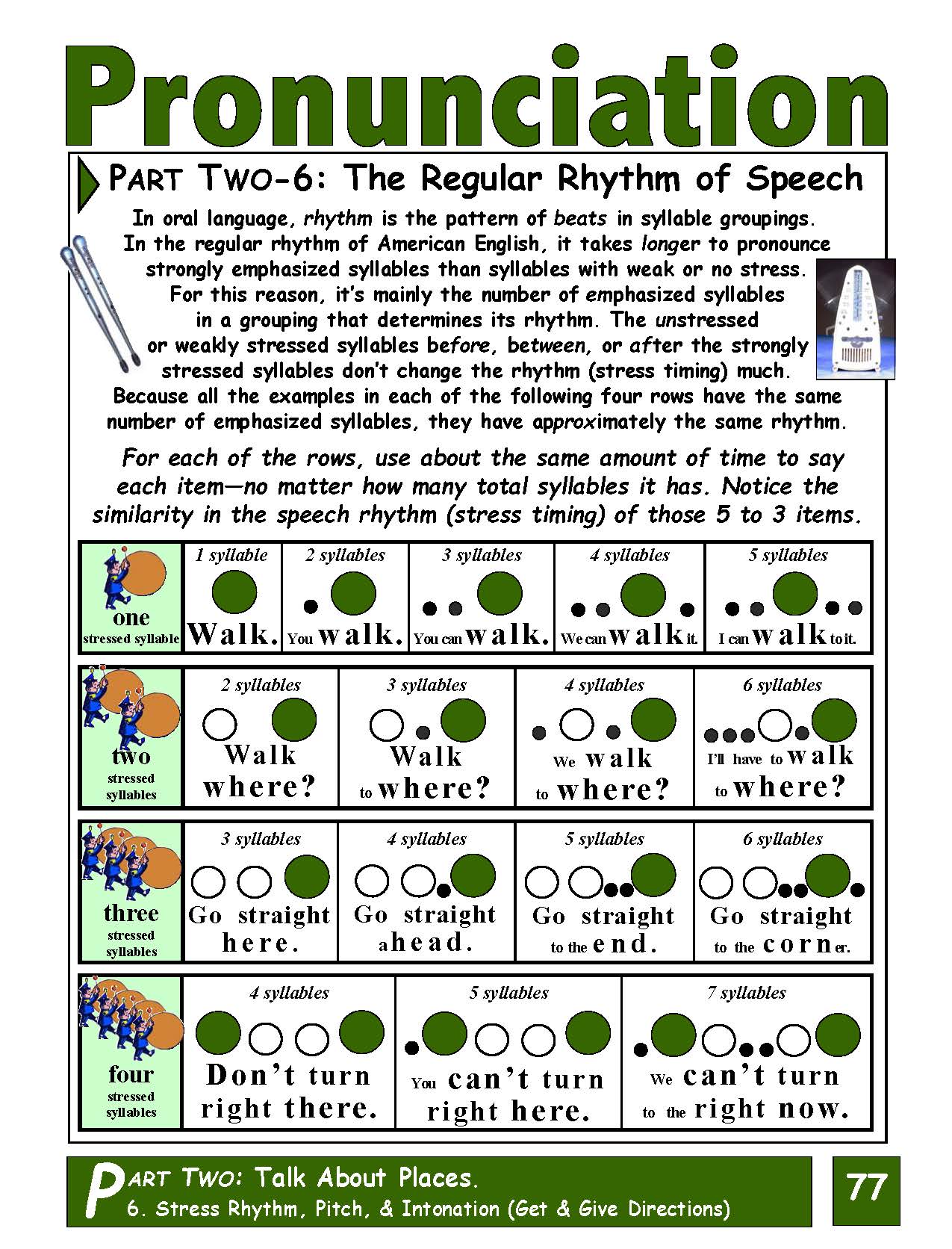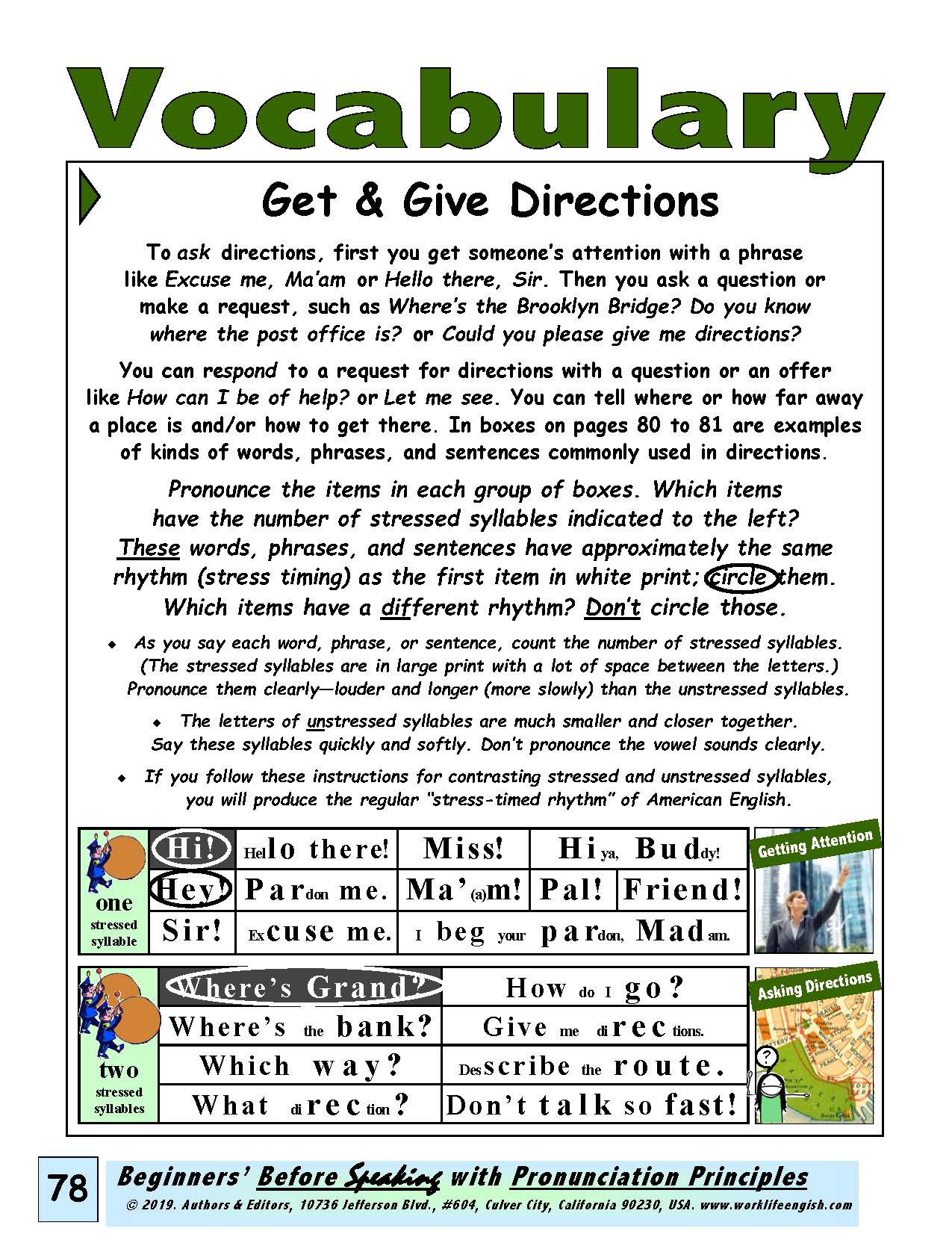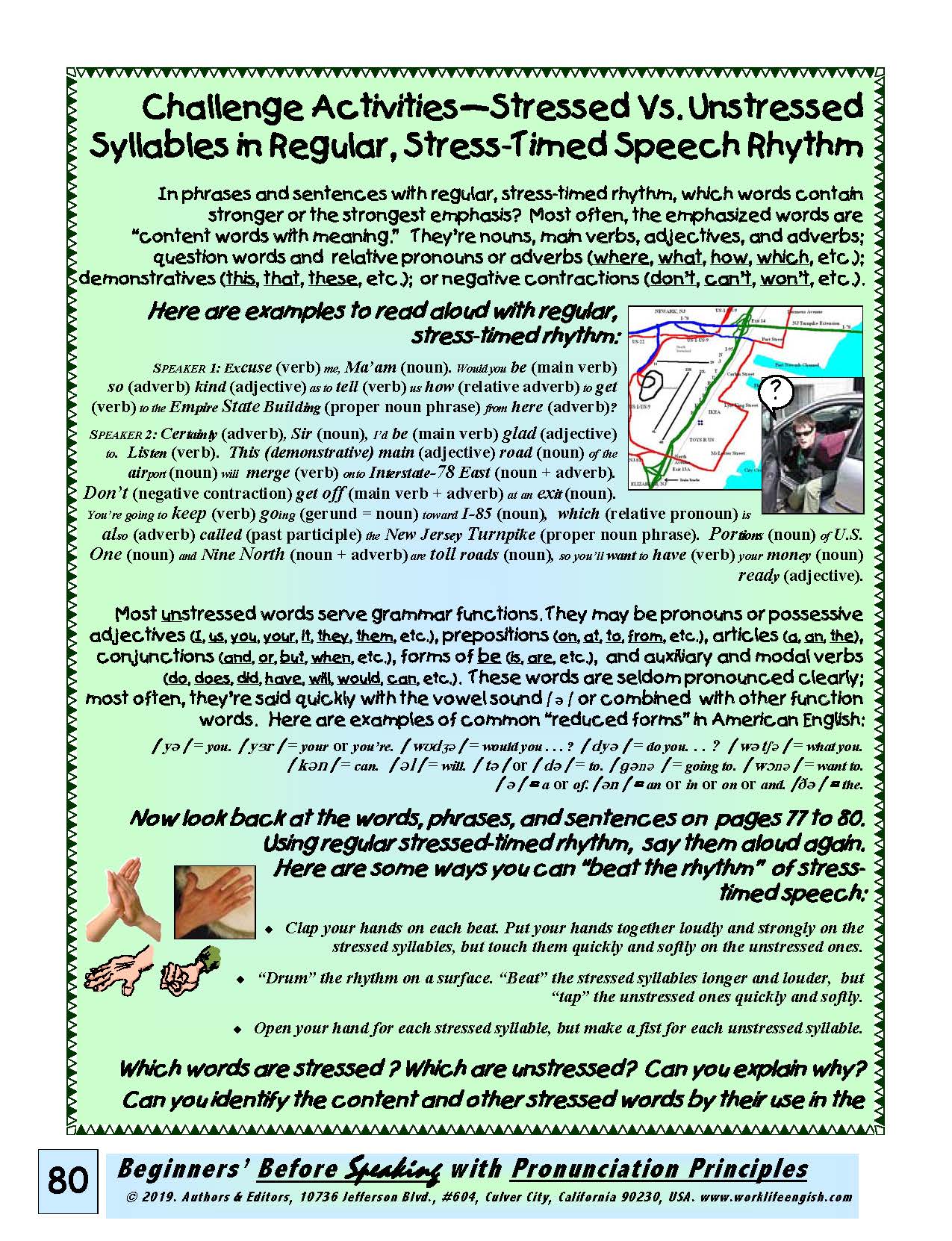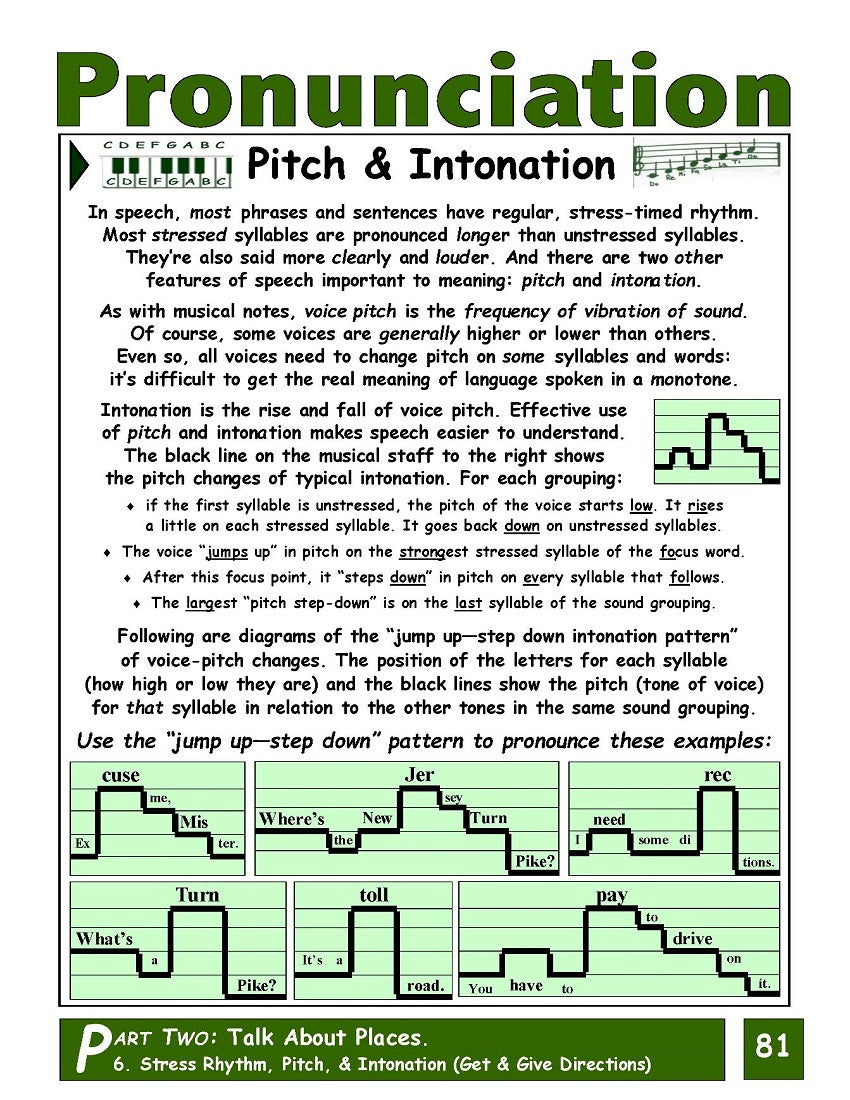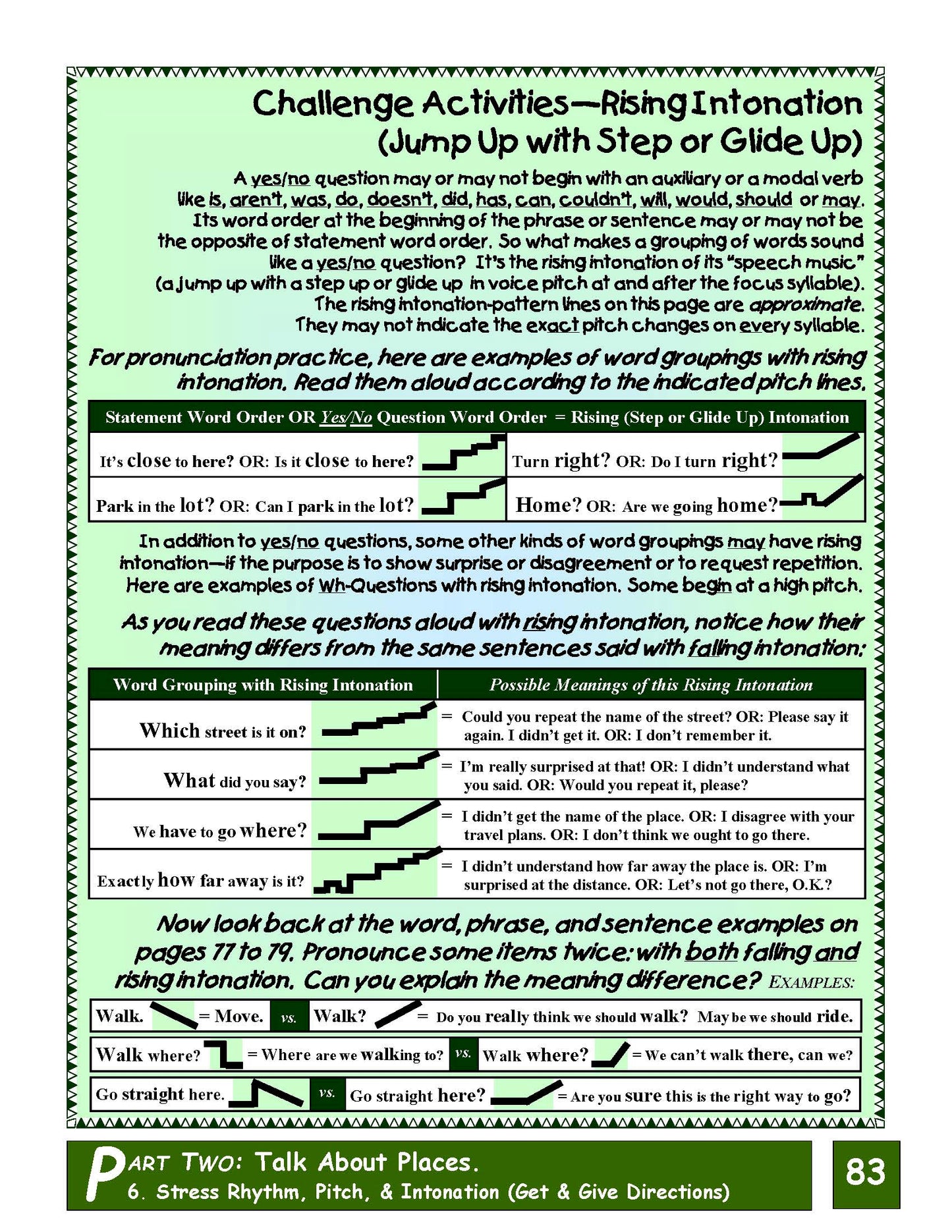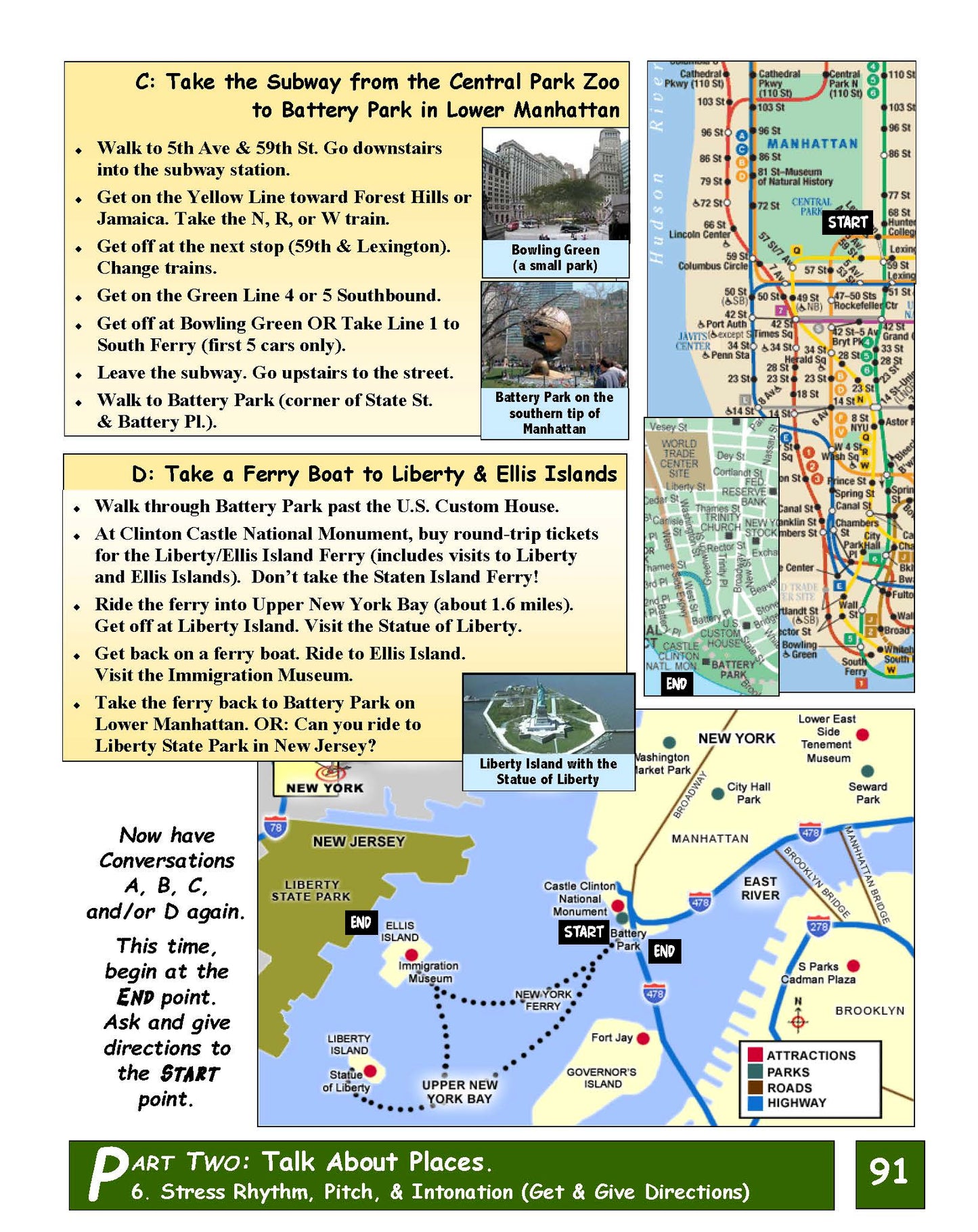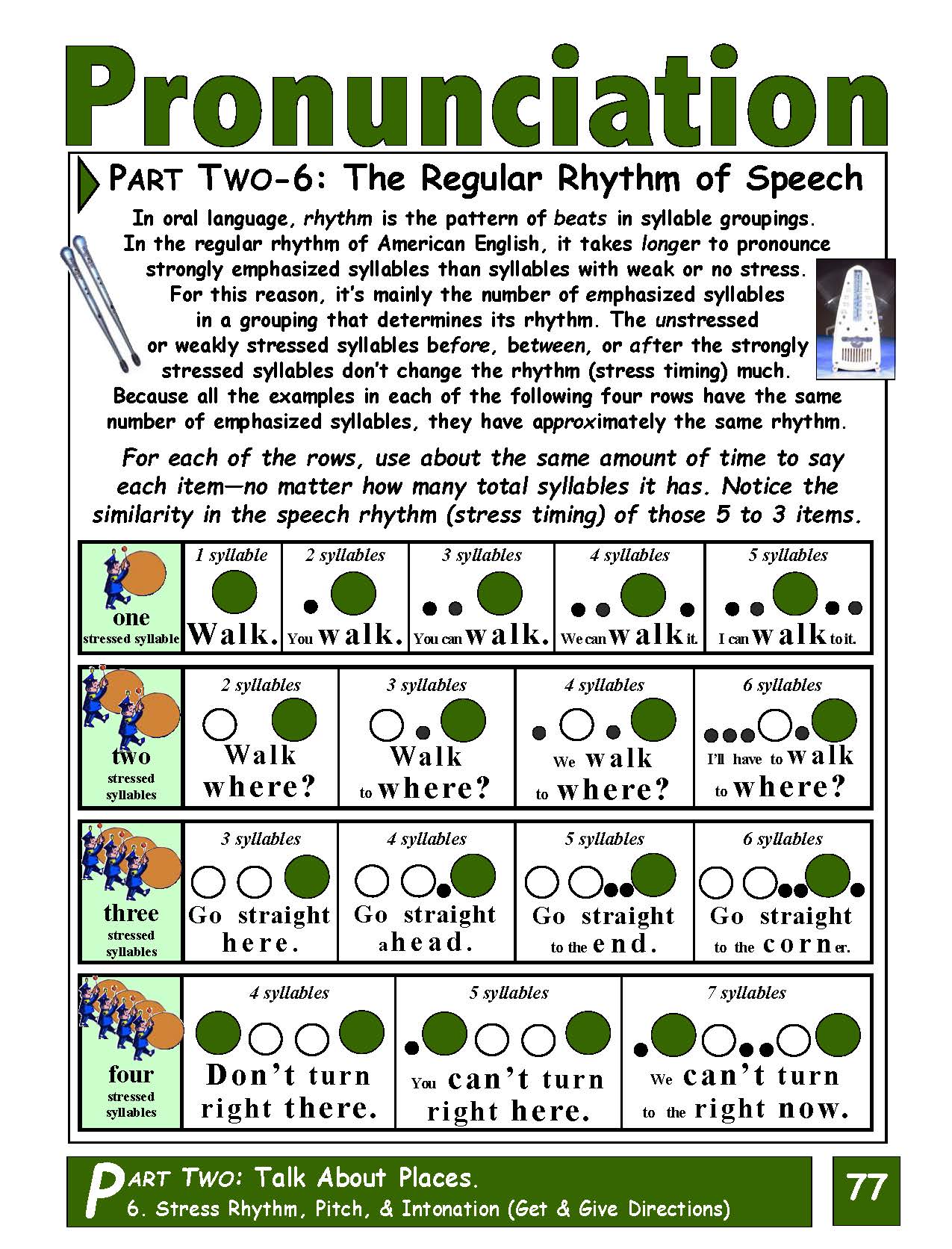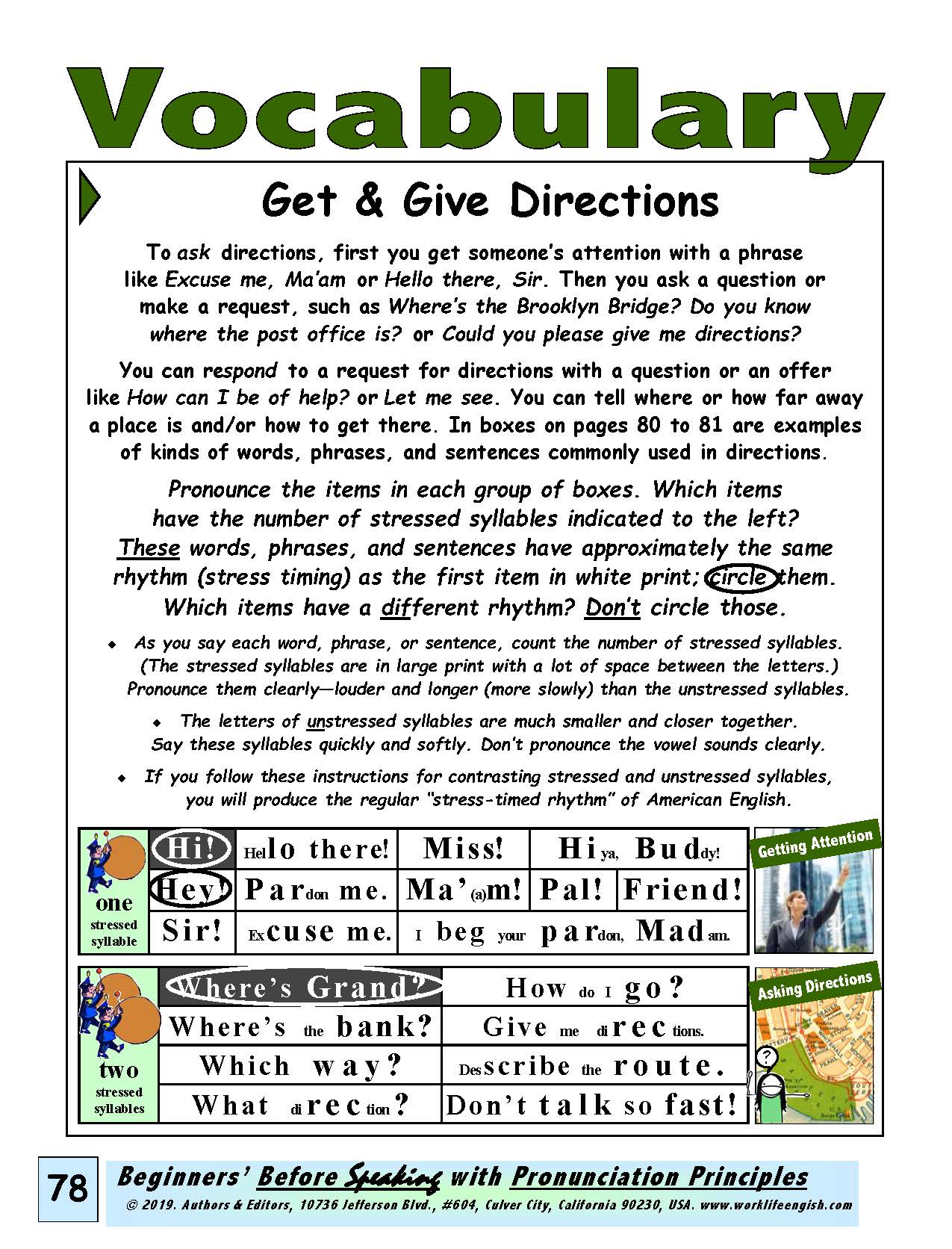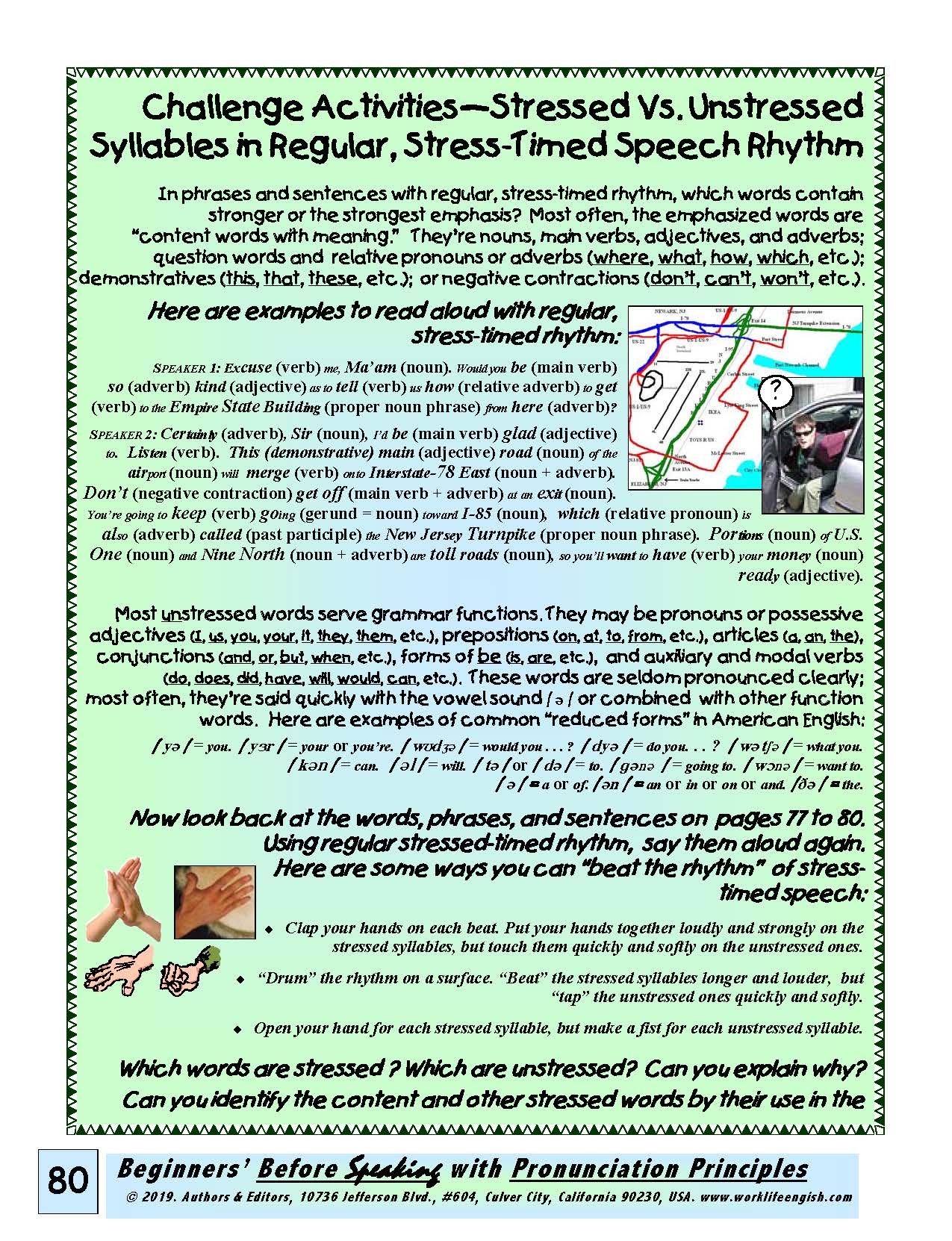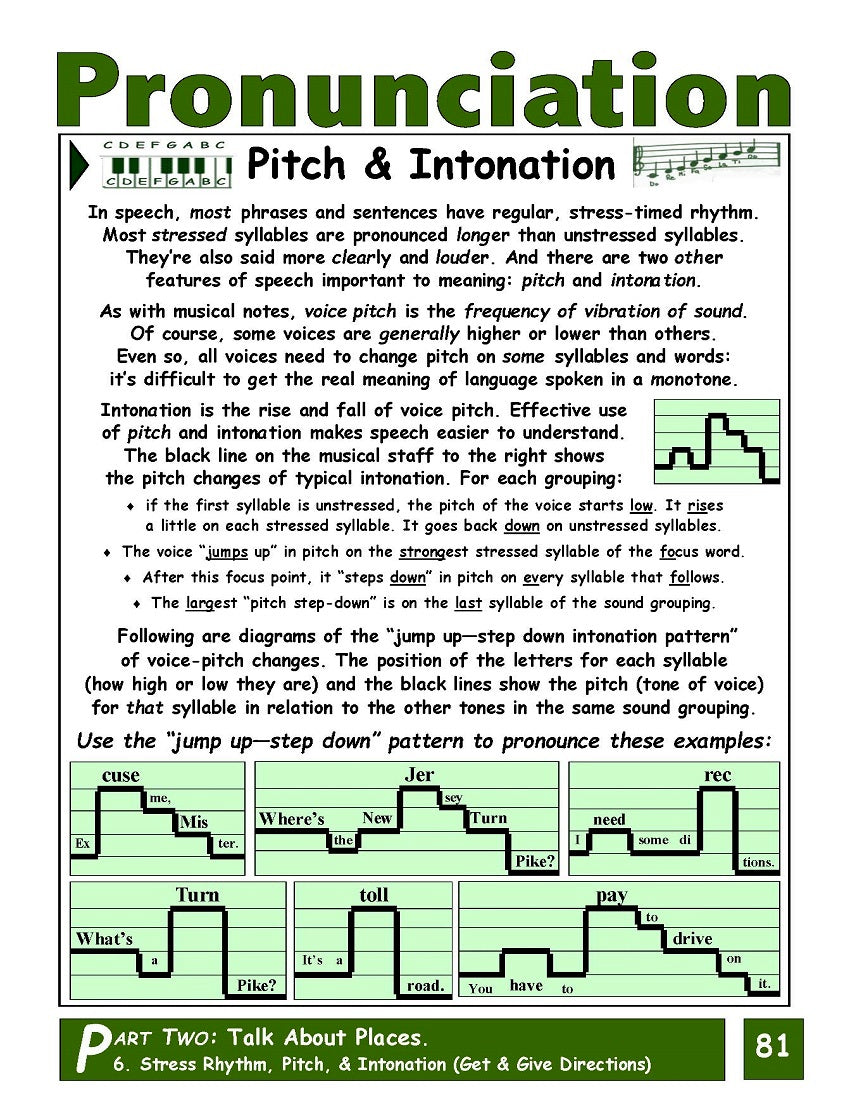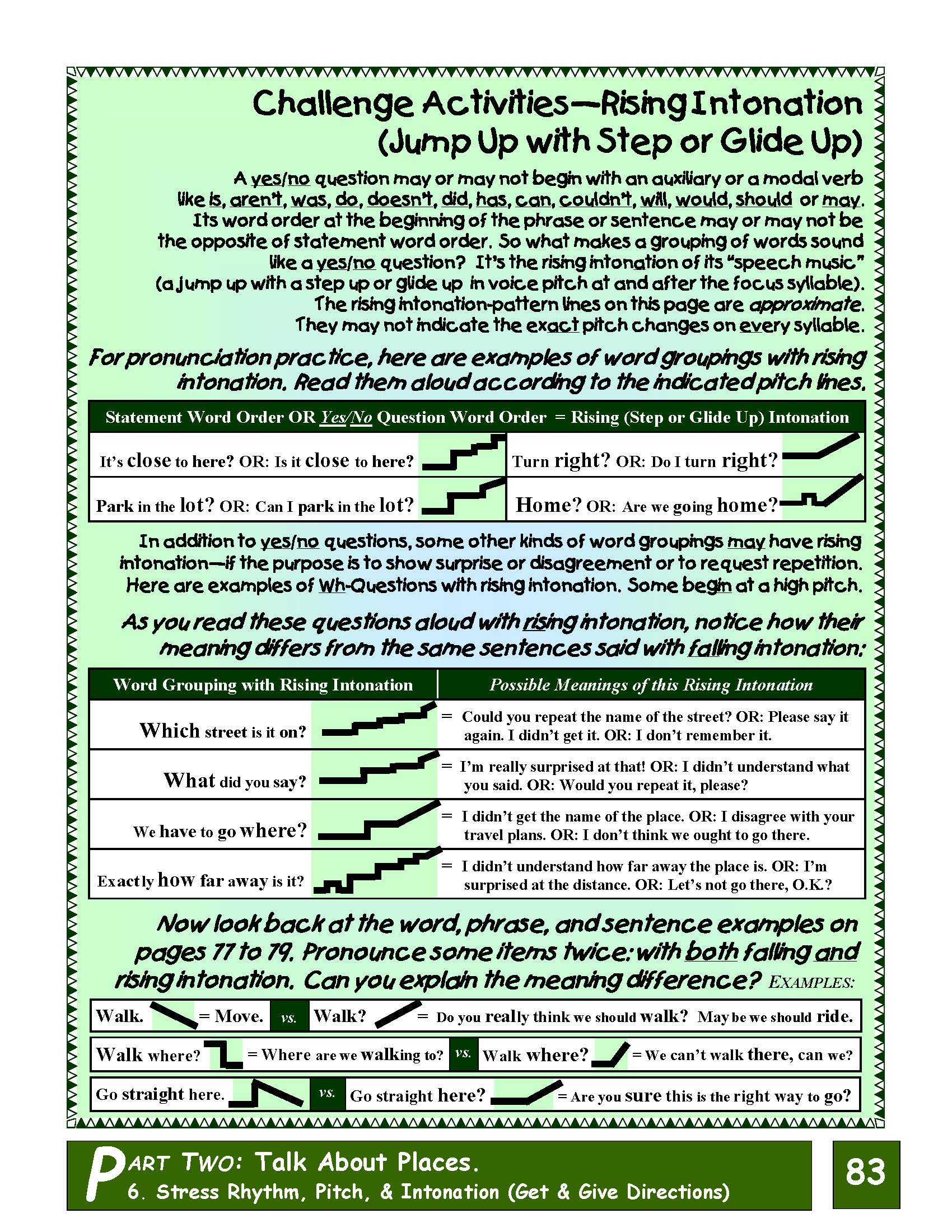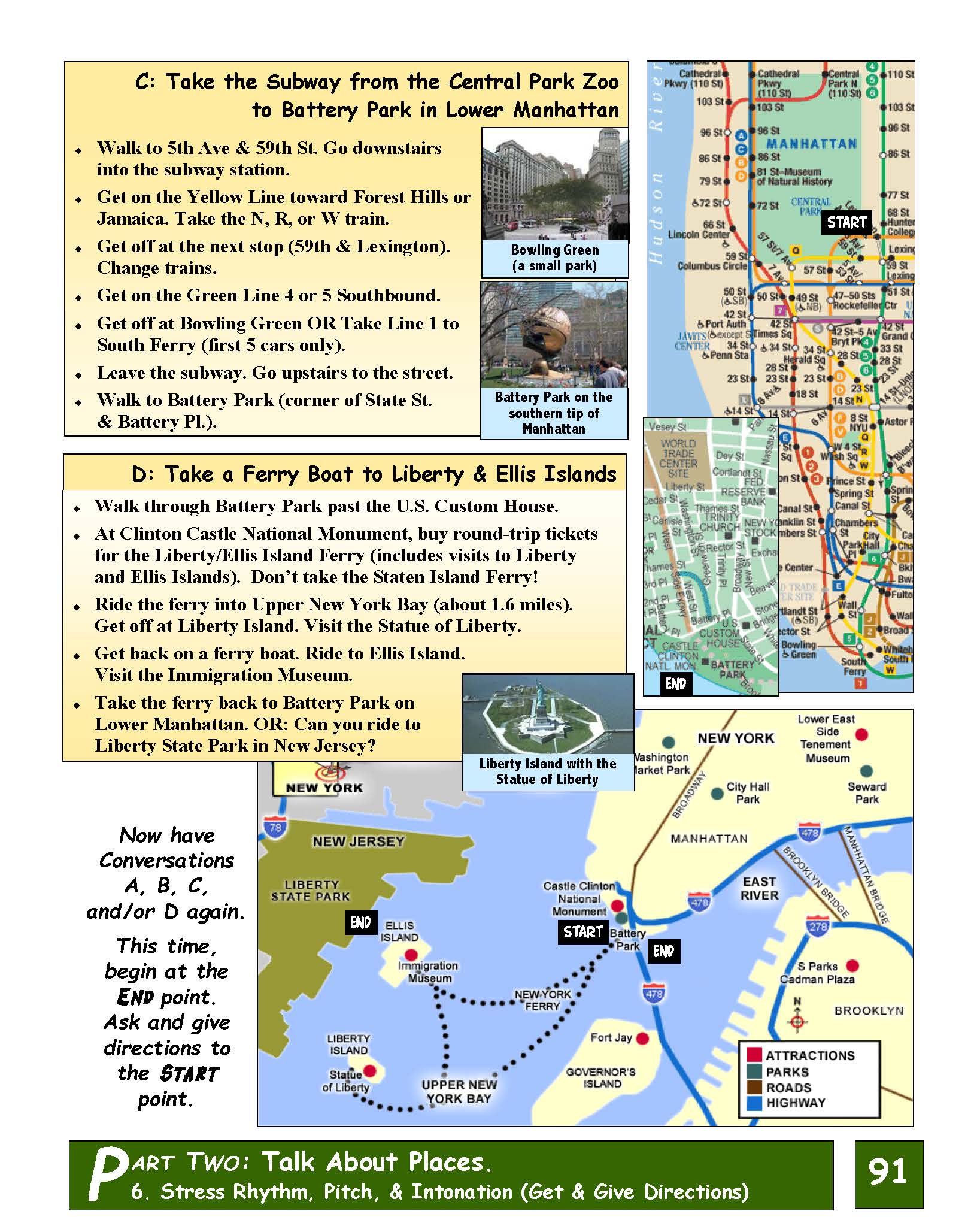1
/
of
6
Work/Life English
E-02.09 Practice the Regular Rhythm of Speech with Pitch & Intonation
E-02.09 Practice the Regular Rhythm of Speech with Pitch & Intonation
Regular price
$8.00 USD
Regular price
Sale price
$8.00 USD
Unit price
/
per
Accent Activities: Pronunciation Supplement to Speaking. Part Two: Syllables Made Simple (Syllables & Syllable-Stress Patterns), pages 21-30 (+ pages 81-82 of Answer Key for Text Exercises)
16 + 24 (40) pages
Who It’s For: American-English (Self-)Teachers & Helpers of (High) Beginners & Beyond Approaching “Accent Credibility” by Polishing Their Rhythm, Pitch, & Intonation
Why It’s Useful: Want to “simulate authenticity” in your / your students’ (acquired) American-English accents or characteristic ways of verbalizing? Start by developing a Regular Rhythm based on numbers of and distances between emphasized Focal Points in word groupings. If you / they learn to pronounce (alternating) stressed vs. unstressed syllables in stress-timed rhythm, adding Pitch & Intonation effectively, your / their talk will “sound native”—even if not all sounds are “perfect.” This E-02.09 Download incorporates these concepts with the routine of Asking for & Giving Directions.
What You’ll Do:
[1] Read and incorporate (into speaking ability) coaching in “the Regular Rhythm of Speech,” labeled more precisely as “Stressed Vs. Unstressed Syllables in Regular, Stress-Timed Speech Rhythm.” Hear, repeat, compare, and pronounce phrase and sentence patterns common when “Getting & Giving Directions.” Add meaningful “Pitch & Intonation” to your speaking repertoire. If it helps to visualize “speech music,” familiarize yourself with linear sentence diagramming that shows “jump-ups” and “step- or glide-downs.” Then for Yes / No Questions, try Rising Intonation with step– or glide-ups. For practice, follow these lines in conversational directions.
[2] If they’re helpful at your teaching/learning level(s), consider Challenge Activities that aim emphasis at Focus Points in sentences with both Rising (in series, choices, or unfinished thoughts) & Falling (in statements) Intonation. Make polished use of these in annotated Driving / Walking / Transport Directives illustrated by Manhattan + New York maps. End with Role-Play (with real directions).
[3] Offered on pages 32-37 of BegBeSp wPrPr Answers to Text Exercises is possible language that can serve as models in Self-Instruction (individualized skills building) and real-life cooperative learning.
Couldn't load pickup availability
